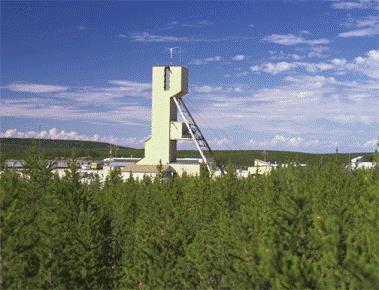Ongoing market uncertainties have prompted major uranium producer Cameco to cut its uranium production forecast, although the company remains confident in the long-term fundamentals of the nuclear industry.
 |
| Commissioning of Cigar Lake will be a priority (Image: Cameco) |
In newly released third-quarter financial results, the Saskatoon, Saskatchewan-based company says it expects to deliver on its sales, revenue and production guidance for the year. However, ongoing market uncertainty over the global growth of nuclear power in the medium term has prompted the company to refocus its plans on projects offering the most certainty in the short term. Cameco's plans had been predicated on forecasts of 95 new reactors coming online over the next decade, but thanks to still-evolving Japanese energy policy, slower global economic growth and changes to nuclear plans in other countries it has revised its forecast to 80 new reactors by 2021, with a matching decrease in anticipated uranium demand.
In response, Cameco has re-examined the timing of its projects and decided to focus primarily on advancing so-called brownfield projects, deferring development at greenfield sites. Overall, it is now planning to produce about 36 million pounds U3O8 (13,850 tU) per year by 2018, rather than the 40 million pounds U3O8 (15,390 tU) it had been previously planning. Nevertheless, the company intends to undertake enough activities to enable it to bring greenfield projects into operation as quickly as possible should market conditions warrant a change in strategy.
Priority will be given to bringing the Cigar Lake project into production, aiming for ore commissioning at the Saskatchewan site in mid-2013 with first production of packaged product by the end of that year. Production at McArthur River is to be expanded, with an updated technical report including reserve increases of some 19% (for Cameco's share) to be filed this quarter. The company also plans to refurbish and expand the Key Lake mill and extend mine life at Rabbit Lake.
Outside Canada, the company plans to expand production at its in-situ leach operations in the USA and to advance the process for extracting uranium as a by-product of nickel and zinc production at the Talvivaara project in Finland. It also plans to continue with a "paced" expansion of its projects at Inkai in Kazakhstan.
The rate of development of the Millennium project in Canada and Kintyre in Australia will be governed by market developments. Cameco says it plans to submit the final environmental impact statement for Millennium in 2013, but that the project will only advance "at a pace aligned with market opportunities and economic circumstances." At Kintyre, value engineering and environmental permitting will continue so that the project could proceed should market factors improve. However, Cameco says it will not proceed with a detailed feasibility study at this time.
Cameco president and CEO Tim Gitzel emphasised that he continues to see a strong long term outlook. "By taking these actions, we expect to spread our capital spending over a longer period and decrease project-related expenses," he said, adding that the adjustment would position the company to succeed in the current market and take advantage of growing uranium demand in the longer term.
Researched and written
by World Nuclear News




_18570.jpg)
_18938.jpg)
_33584.jpg)
_82983.jpg)





